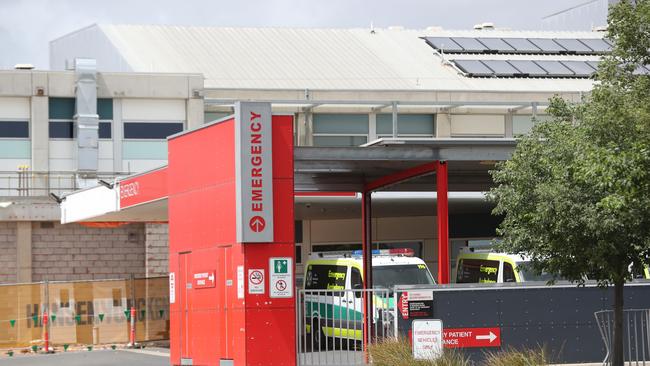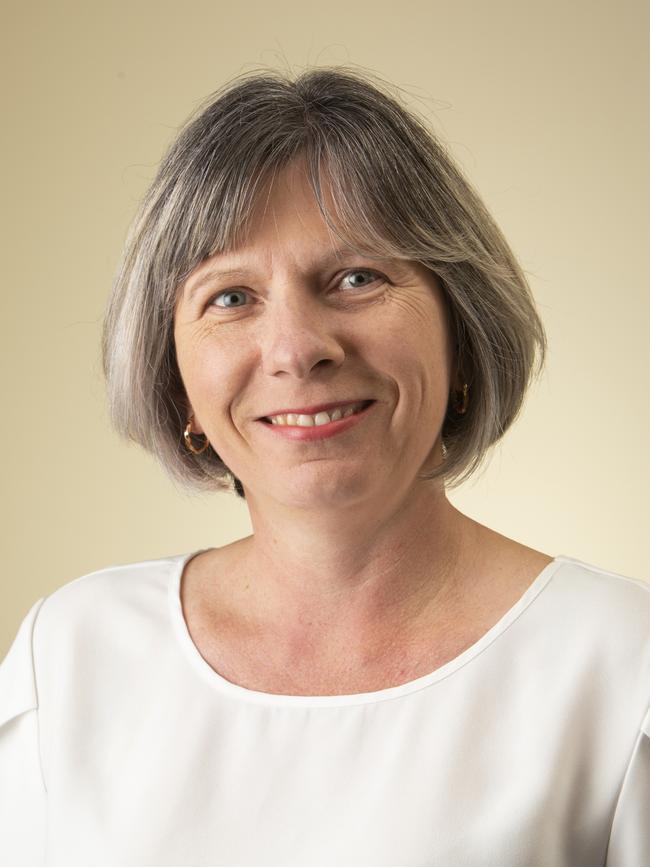SA Health’s plan to outsource surgery to the private sector
With patients waiting up to six years to see a public hospital specialist, and new horror ramping figures, SA Health is planning to use the private sector in a bold bid to cut wait times.
SA News
Don't miss out on the headlines from SA News. Followed categories will be added to My News.
SA Health officials plan to outsource “whole episodes of care including outpatient appointments and surgery” to the private sector as it tackles waiting lists stretching into years just to see a specialist, let alone get on a separate list for elective surgery.
There also will be a “blitz” on huge queues to see some public hospital specialists as new data shows a blowout in wait times in some areas but significant improvements in others.
It comes as August recorded the second worst ramping figure on record after a slight dip from July’s horror figure. Ambulances with patients spent 5284 hours ramped in August, down 255 hours from July’s 5539 hours recorded in a month when an elderly man died after waiting five hours for an ambulance at a residential aged care home.
Health Minister Chris Picton released the data on Thursday while announcing plans to open more hospital beds to try to fulfil the government’s election pledge to “fix” ramping. (See below)
SA Health says new surgery measures are being put in place at the Northern Adelaide Local Health Network (NALHN) which covers the Lyell McEwin and Modbury hospitals to streamline queues.
“Whilst elective surgery has been outsourced in recent years, now for some surgical clinics with very long waits, whole episodes of care including outpatient appointments and surgery are now being considered for outsourcing to the private sector,” it says.
“A blitz on waitlists (at NALHN) will assess people across gastroenterology, ear nose and throat and orthopaedics, with new doctors hired across key specialities.
“The Ophthalmology Unit, which has hired three clinicians alone, has set ambitious targets of helping 1000 cataract patients within the next 18 months, in addition to improving access for patients who are awaiting treatment for other medical eye issues.”
Staff will also take extra efforts to make sure everyone waiting for an outpatient appointment is triaged appropriately and all required paperwork has been received.
The outsourcing would be for elective surgery, not emergency care.
Pushing more surgery to the private sector will be lucrative for private hospitals but may add to queues for people with private insurance waiting for a bed.
Private Healthcare Australia chief executive Dr Rachel David says if the private health system has capacity to treat patients from the public system in times of extreme demand, “it makes sense for governments to pay private hospitals for this.”
However she warned this must not impact on insured Australians’ access to private hospital care.
New data shows there are now 12 specialties where the maximum wait to see a public hospital doctor is five years or more compared to seven specialties in the previous quarter.
The worst wait, of six years, to see an ENT specialist at the Lyell McEwin Hospital, compares to more than 16 years for some specialties in 2018.

SA Health says the report for the quarter ending March 31 shows 51 speciality outpatient services in various hospitals cut overall maximum waiting times by up to 31 months.
These included the Queen Elizabeth Hospital, which saw cuts of 29 months for an appointment in endocrinology (now a 9 month wait), 25 months in sleep disorders (now 7 months), 21 months in respiratory (20 months) and 13 months in breast (4 months).
The Women’s and Children’s Hospital recorded significant cuts in waits to see a specialist in gastroenterology, psychiatry, development disabilities and pediatric medicine.
Specialties with waits at most hospitals stretching into years include ENT, endocrinology, immunology, neurology, orthopaedics, ophthalmology, respiratory and urology.
The report shows the postcode lottery – the maximum wait to see a gynaecologist at the Lyell McEwin Hospital is 47 months, at Flinders Medical Centre it is 34 months but at the Royal Adelaide Hospital it is three months.
Other yawning gaps include a maximum wait of more than five years to see a gastroenterologist at the Lyell McEwin Hospital compared to 11 months at the RAH.
SA Health chief medical officer Dr Michael Cusack said: “All avenues are being explored across the health system to find new systems and pathways that can assist in improving waiting times.”
“With a high demand across the public health system, our metropolitan hospitals are doing all they can to see patients as quickly as possible,” he said.


“All outpatient clinics, particularly those with longer waiting times, are all looking at ways to improve their processes, including administrative and clinical audits of wait lists, digital strategies to support booking systems, and recruitment of additional clinicians to increase clinic capacity.
NALHN chief executive Karen Puvogel noted the Lyell McEwin Hospital is being expanded by almost 20 per cent by the end of next year to improve patient flow.
“We continue to look at new, innovative ways to meet demand and continue providing high-quality care to our community,” she said.
More beds as ramping hits grim milestone
August recorded the second worst ramping figure on record after a slight dip from July’s horror figure.
Ambulances with patients spent 5284 hours ramped in August, down 255 hours from July’s 5539 hours recorded in a month when an elderly man died after waiting five hours for an ambulance at a residential aged care home.
Health Minister Chris Picton released the data on Thursday while announcing plans to open more hospital beds to try to fulfil the government’s election pledge to “fix” ramping.
The government will fast track an extra 12 beds at Noarlunga Hospital plus eight extra beds at Flinders Medical Centre to deliver 130 extra beds in the southern suburbs by the end of next year – 20 more than originally planned.
Mr Picton noted August saw 809 more patient presentations at emergency departments than in July, but that ramping dipped 255 hours. July and August are the only two months where ramping has soared past the 5000 hours mark.
He also urged the federal government to move faster on creating more aged care places saying there are currently 264 people in Adelaide metro hospitals medically ready for discharge who are stuck due to a lack of aged care or community-based support.
“We know we need more beds and that’s exactly what we are building,” Mr Picton said.
“Over the next four years we are expanding southern Adelaide’s bed capacity by the equivalent of two Noarlunga Hospitals.
“We are determined to ensure we can unblock our emergency departments which is why we are expanding every one of our southern Adelaide sites to bring new beds online as fast as possible.”
He said this year the government will deliver an additional 72 beds for the south at Noarlunga, Flinders and the Repat, and another 58 next year for the total 130 by the end of 2025.
That will be followed by a further 98 beds at FMC in 2028, expanding inpatient capacity by more than 20 per cent in the southern suburbs over the next four years.
SA Health data shows the rising demand on the health system in August, even as extra beds are announced.
Compared to the same time last year, August saw:
10 per cent more ambulance patients taken to hospital;
7.8 per cent more triple-0 calls;
7.3 per cent more drug and alcohol-related ED presentations;
6.2 per cent more patients in beds every night – or 155 more beds full nightly.




